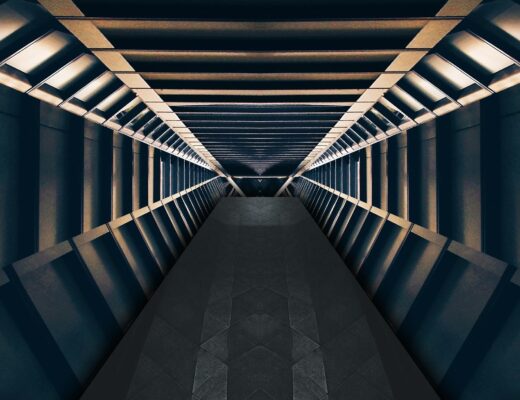As the season shifts to autumn and the weather starts to cool down, at least a bit (not enough for my taste as it’s still hitting the high 80s where I live), I’m reminded of a show I did years ago where temperature played a big role in my performance.
The play was Marat/Sade by Peter Weiss, first produced in 1963.
The full title explains the plot: The Persecution and Assassination of Jean-Paul Marat as Performed by the Inmates of the Asylum of Charenton Under the Direction of the Marquis de Sade.
The entire cast was on stage the whole time, and there were, I believe, at least 25 of us.
Now, the temperature of the asylum is never indicated in the script, but we happened to be in a theatre that at the time had no air conditioning.
We performed in the middle of July.
In Sacramento, California.
Needless to say, it was rather toasty in the theatre.
I played Simone, who is an inmate and attends to Marat the entire show. She doesn’t speak much and doesn’t move much. Therefore I often found myself sitting, crumpled up like a statue until my next cue.
It was so sweltering in there.
The sweating was so real that every time I moved, I could see a wet patch that had clearly been all the water I’d drunken before the performance, sweated out in a nice neat puddle around me.
I was continuously grateful that the show didn’t take place in the arctic because acting cold would have felt impossible.
And thankfully, for this show, I was able to utilize the heat to add to my character’s attentive but often lethargic nature.
Environmental elements
Now, our bodies react to environmental elements all the time, right?
A big gust of wind send shivers down your spine? Does rain cause you to feel gloomy? Perhaps a bright sunny day makes you feel overheated, irate, and shut down.
Do you love loud music? Tense up when you hear neighbors having an argument? Immediately relax when you hear a cat purring?
These are great data points to log away for your next character movement signature.
Utilizing sensory work
So, how can you utilize sensory and environmental work for a character movement signature?
Firstly, I would suggest diving into the script and pinpoint a location.
Where is your character?
Your office?
A beach?
Your childhood home?
Looking at scene descriptions, settings, and time of year, if they’re indicated, can be a really helpful place to start.
Then, you can begin to add layers that are more specific to your character’s journey.
Remember that these things can be shown through your movement and shouldn’t be solely left to costumes.
So, to use the examples from above…
Your office is constantly freezing, you have no control over the AC unit, and there’s a vent right under your desk.
Oh, and you left your fingerless gloves at home. So what does typing out that email look like then?
You hate the beach. The sun is always in your eyes, and it feels as though you’re constantly sweating, which makes you want to move as little as possible.
Your significant other wants to play volleyball, and you had an argument the scene before that has yet to be resolved. How would the sun impact you then?
You’ve always felt safe and comfortable in your childhood home. This is truly the only place you can relax, but the reason you’re here is for your father’s funeral, who you loved dearly. How would this impact how your body would want to move?
Let’s dive a bit deeper.
Temperature
Does your character naturally run cold or hot?
If your character is in the arctic, perhaps you have layers of appropriate clothing.
Or, if you’re on a deserted island, perhaps some shorts and a tank top.
Costumes, though, can sometimes work against you.
Say that arctic scene is being performed in a theatre in the middle of July. Sure, the AC might be on (hopefully!), but you’re under lights, your body subconsciously being used to Sumer (depending on which hemisphere you’re in).
What can help is thinking about what your body does when it’s cold.
Does your nose get cold? What about the tips of your fingers and toes?
Perhaps this is a character who’s stranded in the arctic, and frostbite is beginning to settle in, meaning your toes and feet may be numb. How would you walk if your toes were numb? Is it harder to stand?
If you’re employing Labanotation, this might be a great way to utilize his building block of bound on your toes. To experiment walking around as though your toes were frozen together.
Sound
At times it can be really uncomfortable to be in silence.
Especially if you have someone staring at you expecting the answer to the question they just asked.
What does the silence feel like in that context?
My body wants to shrivel and pull in on itself just thinking about it.
Perhaps your character is the one expecting the answer.
How does that shift your body’s reaction?
Utilize power dynamics in the scene.
Let’s say you’re in a scene where there’s music blasting.
It’s so loud that you can’t think straight.
Perhaps it causes you to tense and hunch your shoulders, squint your eyes, and you become more direct to try and focus.
Sound is an element I love to experiment with. One of my favorite things I do when developing a character is play around with music to discover what genre/s this character would listen to.
What is their soundtrack, and how does it mesh with their emotional states through their journey?
How will you utalize sensory work?
These are just a few ways you can begin to incorporate environmental and sensory elements into your character movement work.
Something else to remember is that these choices don’t have to always go hand in hand with your character’s motivations.
At times it’s fun to play against the motivation and see what happens.
So, what’s the weather outside like right now where you are? How does your body react to it, and can you log it away as future actor character movement work data?
In my experience, playing with these elements only enriches your performance for both you and the audience.
And hopefully, if you’re in a theatre in the middle of July, you have AC.
Happy moving!




